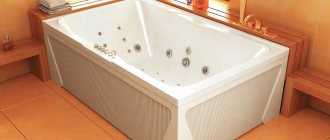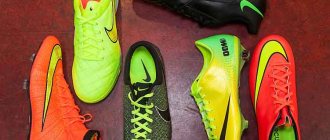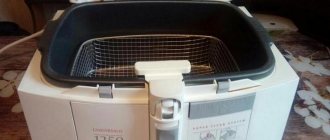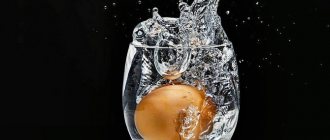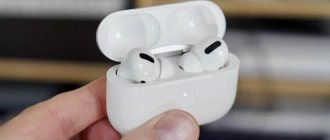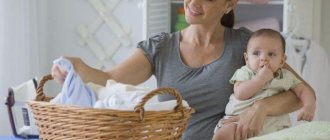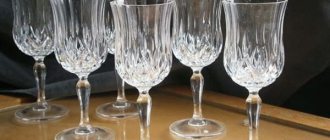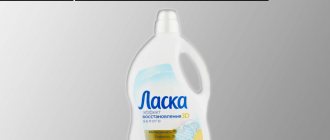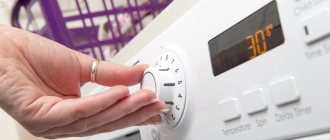How often should toys be cleaned?
The frequency of cleaning depends on how often the child uses the toy. The more it is played with, the more often it needs to be washed. This simple rule applies to the period when your child is healthy. If your baby suddenly gets sick, for example, with the flu, this should be done more often. You should wash it thoroughly again after the baby has recovered.
Plastic bath toys are easier to clean. This should be done every week if the child plays with them every day. Plush toys can be machine washed once a week. However, first check the manufacturer's recommendations for washing mode, temperature and detergent use. Electronic toys require only superficial treatment with disinfectants.
Babies' toys, which they often put in their mouths and then throw on the floor, require special attention. Rattles and teethers should be washed every time they come into contact with the ground or dirty floors. The general rule for such toys is to wash them every two days.
[adp-shortcode id=”1260"]
Is it possible to disinfect toys with vinegar?
It must be said right away: no. Vinegar is a good helper for the housewife in the kitchen; it can remove some scale residues, but is powerless against most pathogens on surfaces. It is better to wash toys with hot water and baking soda rather than using vinegar.
Care and disinfection of children's toys
Cleanliness is the key to children's health. This is precisely the statement that district pediatricians repeat to all mothers without exception. In principle, mothers themselves know this, but sometimes there is not enough free time for this cleanliness. So, why am I saying this? Besides, I want to tell you clearly about how to disinfect toys without much difficulty.
Any toys become dirty over time, even if you can’t see it, but believe me, a lot of different bacteria accumulate on their surface. According to the rules, it is recommended to disinfect toys weekly at home and daily in kindergarten.
We carry out global sorting
To be honest, the weekly disinfection of our toys caused me a quiet shock, since we have so many of them that I won’t have enough time to process them in a year. In this regard, I decided to sort the toys into certain groups, and only then wash them sequentially. I’ll warn you right away: the sorting was done only on paper for the purpose that when it comes to washing the toys, I’ll just take a sheet with the list and take only a certain group of toys to the bath. With this approach, I managed not to leave a single toy unattended.
I got 10 groups: 1. Mosaics, Legos, small construction sets, Kinder surprise toys and all other small things.
2. Battery-powered games and toys.
3. Plastic construction sets.
4. Play sets: first aid kit, children's play utensils, hairdresser, etc.
5. Children's railway and auto track.
6. Soft toys, doll clothes.
7. Wooden puzzles and electronic games.
8. Machines made of plastic and rubber.
9. Dolls and baby dolls.
10. Rubber and plastic toys: animals, guns, balls, etc.
What and how to disinfect?
After thinking a little more about the mountains of toys and evaluating all 10 groups, I logically assumed that soft toys and doll clothes would be torn apart by the washing machine. I know that many people are surprised by this approach to soft toys, because there are also singing toys.
I remember this and already know in practice that washing in a washing machine will harm more than one mechanism in a soft toy. Tested by practice and confirmed by the assurances of one electronics engineer I know. There is only one caveat: after the soft voice toy is washed in the machine, during the drying process it can talk and sing on its own. After it dries everything will be as before.
If everything was simple with my children’s soft pets, then with the rest of the toys I had to tinker. I disinfect all electronic toys, wooden puzzles, electronic games and cars with alcohol, since such toys cannot be washed under running water. I buy a bottle of vodka at the store (alcohol is sold in pharmacies only by prescription), after which I soak a cotton swab in it and wipe the toy. I recommend doing this in selected groups. For example, this week you disinfect the seventh group, and next week the second.
All other toys can, in principle, be washed, but again you should pay attention to the components of the toys. So I soak the entire first group from my list in a basin with laundry soap dissolved in it. After an hour, I wash everything under running water and put it on a diaper to dry.
I note that you need to wash it very thoroughly, otherwise a white residue will remain on the toys. This group is undergoing such massive disinfection, since it is not possible to wash every little thing.
Plastic cars and rubber toys can be washed under the tap with baby or laundry soap, and also laid out on a diaper or sheet to dry. I understand that you will still have to tinker with each car and toy, but if you do this in groups every week, then it will not be so burdensome for you and after 2 months all the toys will be washed.
At first I wrote that toys should be disinfected weekly, but I repeat once again in modern conditions this is impossible. But who knows, maybe there are mothers who can do this. But I’m giving up on this one.
Please note that you need to dry the toys until they are completely dry, since if there is water left in any nook or corner of the toy, the toy may become rotten. You probably put all the toys at once into special containers and baskets, and there the access of oxygen is limited, which is why there is nowhere for moisture to evaporate and the toy will begin to smell bad.
Don't forget to keep the container or basket clean
Also, do not forget about the cleanliness of baskets, boxes and containers for toys. While you are disinfecting toys, take a regular disinfectant and dilute it as directed on the bottle (to disinfect various surfaces) and treat the drawers and play containers with the resulting solution, but only then let them dry thoroughly. In principle, such treatment is not harmful for the child, but if there is any reaction to chlorine, then it is better to simply wash everything with baby or laundry soap.
Personally, I carry out such a large-scale disinfection of toys every six months. The children are happy, and I, like a well-fed boa constrictor, look at my children playing with washed toys. I have been using all the methods described for quite a long time and am very pleased, maybe someone has other approaches, so you need to focus only on your child.
lisavika.ru
How to wash plastic toys
Solid plastic toys - rubber rings, animal figures, blocks - can be washed in the dishwasher. If you decide to wash plastic toys that have parts of the face painted on them, first remove the head of the toy. This should be done, for example, with Barbie dolls, the paint from which is very easily washed off with soapy water.
Bath toys are washed after each water treatment with them. You need to use hot water with baby soap to disinfect them. Watch carefully for toys that have holes.
Through them, water gets inside the toy and, if it is not dried, mold may appear there. Dry toys thoroughly and do not leave them in a damp environment. If you see that mold has appeared inside the toy, throw it away immediately.
[a[adp-shortcode id="1260"]p>
Universal antiseptic for children's rooms
It’s good to have a product “on hand” that can be used to disinfect drawers and baskets for toys and surfaces in the nursery.
You can cook it yourself. Mix half a glass of boiled chilled water and half a glass of 9% table vinegar, pour in 1-2 tablespoons of lemon juice, add 3-5 drops of tea tree essential oil. Mix the ingredients thoroughly and pour into a spray bottle.
.
This antiseptic can be used to treat toys. After some time, wipe them with a clean damp cloth.
Source
How to wash soft toys
For machine washing, it is advisable to choose a delicate cycle and detergents intended for children. It is best to choose a temperature of 40 degrees. But here you need to know that indoor dust mites disappear only at 60 degrees and above. When the rinse cycle begins, add fabric softener. It is best to repeat the rinsing to be sure that the remaining detergent is washed away.
Attention: washing in a machine can change the appearance and shape of the product.
Hand washing is intended for toys that have glued parts or are stuffed with something such that water procedures will lead to damage to the product. It can be cotton wool, cereals, shavings, sawdust, etc.
It is best to take a sponge and soapy water to carefully treat these toys. You should not get such toys wet, and it is advisable to immediately dry the areas that you have treated with a hairdryer.
Don’t forget: wash toys that have built-in batteries, squeakers, etc. things cannot be removed, they can only be cleaned.
[adp[adp-shortcode id="1260"]
Each toy has its own cleaning method
Before washing a particular toy, you need to analyze which cleaning option is best for it. Let's list what methods there are:
- dry cleaning;
- wet cleaning;
- washing in a washing machine;
- handwash.
You can also disinfect “soft dust collectors” at home using one or more of the following methods, choosing the most suitable product for yourself:
- steam generator;
- UV lamp;
- cold.
Soft toys can be divided into several types, each of which is suitable for one or another cleaning method. These procedures will be discussed in more detail below.
Useful: What things should you buy for the birth of your baby?
The following groups of a child’s “soft friends” can be distinguished:
- large in size;
- stuffed with tiny balls (so-called anti-stress), with glued eyes, spout and other fittings;
- musical, battery operated.
Toys that do not fit into any of the groups listed above can be cleaned and disinfected in any way.
You can vacuum any type of toys. You just need to be careful when handling animals with glued fittings. In places where it is located (usually on the muzzle), it is better to reduce the suction force. Any toys can also be disinfected using the methods listed above.
Large-sized “plush animals” (a third of a person’s height or more) cannot be washed in a machine, and it will also be difficult to handle them manually, since once they fill with water, they become too heavy to lift. Dry cleaning is possible if you have a large, thick bag. If stains become dirty, it is better to clean them with a damp sponge using baby detergents. That is, in this case, wet cleaning would be appropriate.
Toys classified in the second group cannot be washed in a washing machine. As a rule, the fittings fly off and can clog the drain or other parts of the machine. The same applies to anti-stress ball packing. Also, you should not wash “animals” in a washing machine, on the labels of which there is a corresponding prohibitory inscription. For toys from this group, dry, wet cleaning and hand washing are suitable.
Representatives of the third group will be properly refreshed without the use of water, that is, by dry cleaning. However, if the toy is completely dirty, you can wash it, after first removing the batteries and music block from it. In some toys, the music blocks are located in a separate pocket with Velcro - it is convenient to take them out before washing and easy to insert into place. In others, the music block will have to be torn off before washing, and the torn area will have to be sewn up. Then rip open the now clean toy again and sew the block into it.
But there are toys in which the wiring is stretched inside throughout the “body”. Such a music block cannot be taken out before washing. However, you can still wash the fluffy one. Often singing toys can easily withstand washing, but you should be prepared that during the drying process they will spontaneously sing songs, meow or recite poems.
Baking soda will help clean the toy from dust without using water.
How to wash electronic toys
Just like a TV remote control, electronic toys only require surface treatment. Be sure to remove batteries from the toy. It is enough to wipe the toy with alcohol or another disinfectant solution approved for use for such a purpose.
Children's books can be disinfected using the same method - children love to chew cardboard, so it is advisable to treat the pages with an antiseptic. Make sure that the disinfectant solution remains on the surface of the toy for at least 5 minutes. The toy should fall into children's hands completely dry.
All toys must be washed daily if there are animals in the house.
Step-by-step description of each washing method
Dry cleaning of toys is easy and safe. The only remedy that is used is baking soda. You will also need a strong plastic bag.
- Place children's toys (2-3 pieces) in a bag.
- Pour in baking soda. On average, 0.5-1 cup is enough, but it all depends on the size of the “animals”.
- Tie the bag and shake it vigorously for 3 to 5 minutes.
- Take out the toys and clean them with a vacuum cleaner, removing soda from the surface.
Useful: How to properly dress a newborn for a walk depending on the season?
Wet cleaning allows you not to completely wash the “stuffed animals”, but only to remove the resulting stains or refresh the “fur”. The product needed for this type of cleaning is baby shampoo or baby bubble bath.
- Pour water into a basin, dissolve the selected detergent in it, and beat it into foam. You can also easily make foam by pouring water into a basin with shampoo not from the tap, but through a shower head with strong pressure.
- Apply lather to the sponge and quickly work over the soft, fluffy surface.
- Take a clean, damp (not wet!) sponge and remove the foam with it.
- Dry the toy with a terry towel and hang it to dry.
- When dry, brush the lint with a brush to give it its original fluffy appearance.
When washing children's toys in a washing machine, keep the following in mind.
- Review the information on the label. Toys should be washed in accordance with manufacturers' recommendations.
- Remove music blocks, batteries, check that all seams are intact.
- Place the “fluffies” in a special bag for delicate washing.
- Select the “delicate wash” program from the menu. As a rule, this mode provides a water temperature of 30 °C.
- Select the “extra rinse” item from the menu.
- Select the “no spin” option in the menu so that the toy does not become deformed.
- Pour baby powder into the powder compartment.
- After washing, toys should be wrung out with a terry towel and hung to dry.
You can wash your “plush friends” by hand by soaking. This is necessary in case of heavy contamination.
- Prepare toys in the same way as for machine washing.
- Pour warm water into a basin.
- Dissolve a detergent for washing children's clothes (soap, powder or shampoo) in it.
- Submerge the toys in water for 10 minutes.
- Rinse them well.
- Squeeze the “animals” so that all the water is gone, blot them with a terry towel and hang them to dry.
What is the best way to process wooden toys?
Oil for wooden toys
As time shows, wooden toys do not lose their relevance. Wood is a natural, environmentally friendly and durable material. For generations it has been used to make objects around the baby, from cribs and high chairs to rattles and a variety of nursery rhymes created by master craftsmen.
Children can play with wooden toys for hours. Rodent toys, construction sets, large puzzles, labyrinths, cubes, pyramids and rolling wheels, cars and volumetric sorters develop fine motor skills, spatial and logical thinking, and teach you to distinguish shapes and sizes. They are useful and beautiful, tactilely pleasant and durable, but most importantly, they must be safe.
The best way to process wooden toys
Wooden toys are cut or cut out according to a template from solid beech, oak, walnut, linden, ash, cedar, alder, maple, birch. Each of them - serial or piece - is sanded with sandpaper with fine grit P220-240. This allows you to get an almost perfectly polished surface and eliminate the risk of splinters. However, wood needs protection from moisture, so the toys must be treated before use. How? Let's look at it below.
Linseed oil
Flaxseed oil is used independently, in the form of drying oil and in a mixture with gum turpentine. The natural composition is safe, so you don’t have to worry about the toy ending up in your child’s mouth. But linseed oil takes a long time to polymerize—even after a few days, the surface remains slightly sticky, and greasy marks may remain on your hands.
Unlike flaxseed oil, edible olive or sunflower oils are not suitable for impregnation at all. They do not polymerize, but only go rancid in the air; over time, an unpleasant odor appears and harmful substances are formed.
Mineral oil
For processing, you can use pharmaceutical edible petroleum jelly. It absorbs well, dries quickly and prevents moisture from penetrating the wood. However, the coating is short-lived and is easily washed off with water. The surface of the toy, unprotected from damage, wears out and becomes rough. To avoid this, waxing is required - additional rubbing with hard wax.
Oils with hard waxes
Natural materials, such as Osmo oil-wax coatings, are what solid wood needs. The composition includes a combination of vegetable oils, which penetrate deep into the structure of the wood, and hard waxes, which lay on the surface in a thin layer, protecting it from the penetration of dirt and moisture. All this provides long-term protection under frequent use. Toys can be wiped with a damp cloth as often as necessary.
Coatings:
- safe, odorless and do not cause allergies;
- resistant to dry and wet abrasion, does not flake or flake;
- are easily cleaned from household dirt and are not afraid of stains from coloring products, which is very important, since children play both on the floor and at the table;
- are resistant to saliva, so you can “taste” the toy as much as you like.
After treatment with oil and wax, the surface becomes pleasant to the touch and protected from damage. A child can throw, roll and even chew his wooden toys. After all, this is how children learn about the world.
How to oil wooden toys
Thanks to the natural grain of the wood, each solid piece is unique in itself. You just need to choose what decorative effect you want to achieve - highlight and emphasize the texture, preserving the natural color of the wood, or paint it in bright, rich shades.
Two methods are used for processing:
- Dipping
Toys with a polished surface are immersed in a container of oil, taken out and dried. For deeper impregnation, they can be kept in the composition for a while. If the toy has a surface with a complex texture, it is recommended to remove excess oil with a soft cloth. This will eliminate uneven processing, streaks and the appearance of dark spots.
Dipping is well suited for untinted oils that form clear coatings, such as Hartwachs-Öl Original. This method is well suited when you need to process several toys at once.
- Painting with a brush
For coloring, you can use Dekorwachs Transparent Töne glazing oils or Intensive Töne glazing oils. Even a child himself can cope with the task. Oils are easily applied with a brush; for large toys - rollers or rocking chairs - a small microfiber roller with short pile is suitable.
The palette has bright, rich colors: red, yellow, blue, green, black, white and natural tones. If you apply them in 1 layer, you get a colored transparent coating that leaves the wood grain visible. When applied in 2 layers - opaque, opaque.
Oils provide ample opportunities for creativity. You can use ready-made shades or get creative and mix Dekorwachs Intensive Töne products of different colors with each other. This produces unique bright and pastel shades. Small 0.125 liter jars and sample sachets allow you to avoid extra costs.
Toys that are used frequently and are subject to heavy wear and tear, such as cars or blocks, are recommended to be additionally treated with Hartwachs-Öl Original clear oil as a topcoat. This will protect them from rapid abrasion and scratches when rolling, throwing or hitting the floor.
How to care for oiled wooden toys
Oils give the wood surface dirt- and water-repellent properties. Treated toys do not require special care. They can be washed with running water and soap with a neutral or slightly alkaline PH, which does not damage the protective layer and does not dry out the wood, or wipe with a damp soft cloth. All dirt is removed without difficulty.
Toys that have lost their original appearance: shine, rich color, smooth surface must be re-treated. They can be polished with fine sandpaper if necessary and re-oiled. If reapplied, one coat will be required.
Note.
Photos provided.
Cleaning soft toys and dolls
However, over time, soft toys and dolls still lose their appearance from repeated washing. A few washes probably won't do anything to the toy, but if you wash your toys frequently, they will deteriorate over time. Explain to your child that toys require careful handling. Then you will have to wash them less often.
There are some soft toys that are not allowed to be washed; it is better not to buy such toys for small children.
It is best to simply wipe dolls with damp wipes, wash them with soap (including doll hair), and doll clothes can be washed: by hand or in a washing machine.
Let's see how to clean the hair of dolls and other toys (Barbie, Ken, My Little Pony, etc.).
The dolls' hair is thin plastic strands. Wash the doll's head with a couple of drops of liquid soap, massage them into the hair to the base. Then rinse well with cool water and lay to dry, and it is better to comb right away to avoid tangles. If your hair is seriously damaged or has lost its shine, becoming dull and matte, soak the strands in a small bowl of conditioner and water overnight and then rinse. Using a comb, carefully comb out all the knots.
There are many reasons that we can discuss, but the most important one is the health of children.
What causes a cold?
Contrary to its name, a cold is not caused by exposure to cold air - it is caused by a viral infection. The common cold is also known as an upper respiratory tract infection and can be caused by about 200 different types of viruses. Studies have shown that people exposed to the respiratory virus got colds, while people simply exposed to cold air did not get sick.
We suggest you read: How to repair an air mattress
Why then are colds more common in autumn and winter? Cold weather doesn't give kids colds, but it does cause them to spend more time indoors, where they spread viruses to each other. Staying indoors with the windows closed increases the likelihood of catching a cold, and the damp air outside makes the situation even worse. In winter, the spread of the virus is inhibited by frosty air.
How to prevent the spread of a cold?
It is inevitable that a child will sometimes get a cold. Infants and toddlers average 10-12 colds per year, preschoolers average 5-6 per year, and older children and adults usually get fewer colds. The good news is that exposure to viruses helps children develop immunity to help prevent future colds and more serious illnesses. A healthy routine with good nutrition, adequate sleep and exercise helps keep the immune system strong.
Since children always get sick (the younger the child, the more often), and because they always play with toys (including each other’s toys, especially in kindergarten and children’s groups where toys are shared), cleaning toys is crucial for maintaining health, especially during the cold months indoors.
Baby and toddler toys should be washed at least once or twice a week due to the fact that they often go into the child's mouth.
Older children's toys can be cleaned monthly, while plush toys can be washed a couple of times a year.
How to Clean Plush Toys
Most plush toys come with tags that tell you the cleaning procedure.
Sometimes only external cleaning is allowed, no washing, and that's okay. However, if you are determined to wash the toy, you can certainly do so. If you don't need to wash, but just need to remove dust, you can vacuum the toy (to prevent the sewn elements from coming off, put the toy in old tights, and then vacuum through them). But let's get back to the laundry.
After washing, fur stuffed animals tend to change slightly and lose their original appearance, so keep that in mind. Without a real need to wash a toy, especially a child’s favorite one, it may not be worth it.
There is a category of soft toys for babies that are designed for frequent washing, they are usually without fur/lint, and after washing they really are like new. If you love cleanliness always and everywhere, choose these toys.
How to disinfect
Regular cleaning of toys only removes dirt, but does not destroy germs and pathological organisms. There are several ways to disinfect things:
- Steam generator. Treating a toy with hot steam allows you to destroy types of bacteria and viruses such as tuberculosis, influenza A, staphylococci, E. coli, and fungal organisms.
- The ultraviolet radiation of the lamp will provide protection against dust mites, various viruses, and bacteria. When the lamp is working in the room (the duration of operation is no more than an hour), there should be no one in it.
- Cold treatment. To do this, just put the toy in the freezer for a couple of days - the pathological formations will be destroyed.
Without paying attention to the cleanliness of your home, the risk of contracting infectious diseases increases, since its sources remain on toys. Even if they are clean at first glance, these products are “dust collectors,” especially if they sit without cleaning for several months or years. To protect against diseases and keep your home clean, it is enough to wash all toys once every three to four months, then they will bring only positive emotions.
Disinfection of household toys
Indoor toys also need to be washed from time to time. Washing can be done in one go. To do this, take a large container (basin) and prepare a soap solution in it - dissolve soap or detergent in warm water. Then the toys are immersed in the solution and washed thoroughly with a rag. After this, they are washed with running water and dried.
When walking with your child, it is a good idea to carry disinfectant wipes with you. If a child gets dirty or drops the toy, it can be wiped with Septolite Antiseptic Napkin. These are wet wipes soaked in disinfectant. “Septolite Antiseptic Wipes” are produced in compact packaging that you can always take with you.
You can also disinfect toys with Septolite Antiseptic. To do this, apply an antiseptic to a napkin and wipe the product with it. After this, if necessary, wipe off the remaining disinfectant with a clean napkin.
Source
Disinfection of toys in medical institutions
In medical institutions, as well as in preschool institutions, only products made of rubber, plastic and wood can be used. In health care facilities, toys must be disinfected daily. Disinfection is carried out as follows: the products are immersed in a container filled with a disinfectant solution. At the end of the disinfection holding time, remove from the solution, rinse thoroughly with running water and dry.
To disinfect toys, it is necessary to use effective disinfectants with a broad spectrum of antimicrobial action. At the same time, the disinfectant used should not be toxic. These properties are fully met by the Septolite Plus disinfectant.

